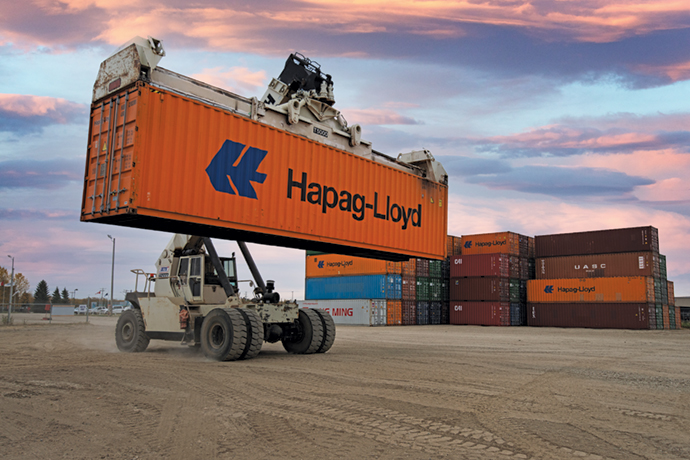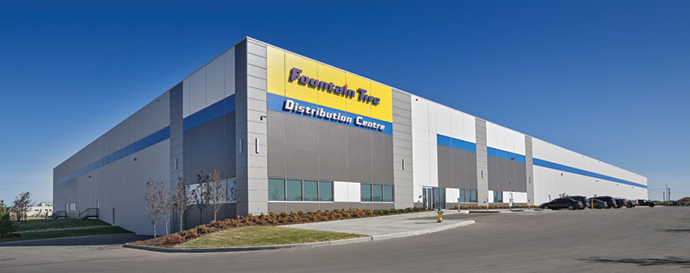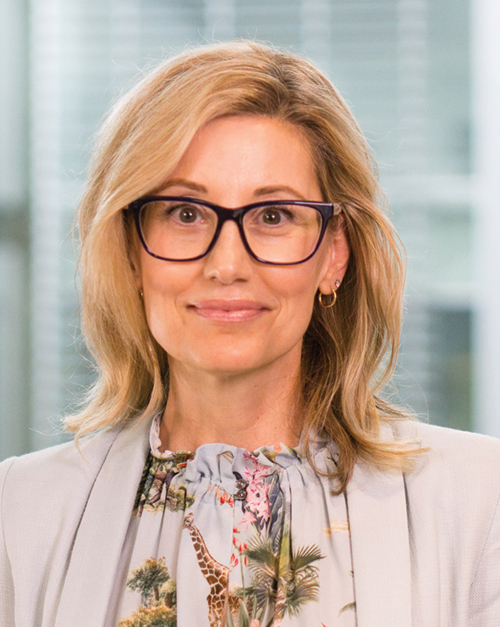Alberta’s Parkland County has never stayed down for long. Why should now be any different?
The municipal district, home to around 32,000 people just west of the Edmonton city boundary, knows a thing or two about transitions. It’s half-rural and half-urban, for starters. It was born from four small improvement districts, three of which banded together as Stony Plain and, among other goals, set about to build a seed cleaning plant.
The county at one time was home to half of the 18 coal-burning power plants in Alberta as well as an operating coal mine. As documented by the Parkland Institute (a University of Alberta–based think tank), TransAlta, the operator of those plants, was the largest employer in the county and accounted for about a quarter of the county’s tax revenue. Now Alberta is phasing out coal completely by 2029. Meanwhile, the oil & gas sector continues to be down in the dumps, and a pandemic has jumped on board for good measure.
To Parkland leaders, that just means it’s time to stand out from the hand-wringing crowd.
“While everyone else is looking at their shoes, the county has its head up and is looking forward,” says Rob MacMullen, the county’s manager of economic diversification and business development.

“The county’s elected leaders and municipal staff took leadership early on in recognizing that TransAlta was going to be a reduced source of middle-class jobs and municipal tax revenue going forward,” says Ian Hussey, a political economist and research manager at the Parkland Institute who conducted a case study of Parkland County as part of a larger project on Alberta’s coal phase-out and its impact on workers and communities. “The county leaders’ foresight enabled them to attract new private investment in the municipal district in such diverse industries as pet food manufacturing, renewable energy, agriculture, leisure, natural gas electricity [construction of a new gas pipeline and power plant] and cannabis. The county’s leaders were also able to successfully leverage available provincial and federal government funds for Tri-Region regional planning and for improvements in the local highway system to attract even further private investment in the future in goods manufacturing in Acheson industrial park.”
“There’s a fair bit of innovation here,” says MacMullen. “We knew the power plants and coal were going away. Instead of wallowing, we asked ‘What do we need to do?’ ”
“What sticks out for me is community leadership from the public and private sectors alike,” says Guillermo Mazier, vice president, global innovation, at Site Selection publisher Conway Data, which works with county economic development leaders. “It’s a reflection of the community’s culture — one of progress, resilience, divergent thinking and support.”
Keep It Moving
The proactive approach extends to everything else too.
“We are an entrepreneurial county and very business forward,” says MacMullen. “It’s the approach we take to planning, as well as to investing in infrastructure.”
The county benefits from being located at the nexus of the CANAMEX trade corridor and the Tran-Canada Highway. CN has announced plans to invest $305 million in Alberta. The investment will include the construction of double tracks to allow more trains to pass on CN’s mainline, which sees some 50 trains a day. The railroad operates a major intermodal center in Parkland County.
The newly announced twinning of Highway 60 at a busy intersection in Acheson also will improve goods movement through the region. It’s the first project to move forward from a $1.6 billion provincial government initiative to upgrade its heavy-load road network.
Another project will realign and reconstruct Highway 628, which among other things will improve access to industrial parks in Parkland County, Spruce Grove and Enoch First Nation.
A bigger potential vision for the region looms on the horizon as A2A Rail, formed five years ago to oversee development of a railroad between Alaska and northern Alberta, has assembled a team of more than 40, spent nearly US$100 million, finalized an agreement with the Alaska Railroad Corp. and is continuing to engage with indigenous peoples and communities along the proposed route. The project will not physically land in Parkland County, but its impact could reverberate there for generations.
Logistics Heads West
Solid infrastructure is promising. But there’s nothing like the support that springs from growing companies. Among them in recent months:
- Pinnacle Renewable Energy opened a new wood-pellet plant in Entwistle in 2018, one of eight it operates throughout western Canada in addition to a loading terminal at Prince Rupert, British Columbia, that exports the pellets to the UK.
- Homegrown Champion Petfoods in January 2020 opened a new 421,000-sq.-ft. facility called the NorthStar Kitchen that employs about 200 people in the Acheson industrial area. The operation features three dry food production lines (Acana and Orijen dog and cat food) as well as a distribution warehouse and logistics center. “Alberta’s world-class suppliers, skilled labor force and friendly investment climate provides Champion the opportunity to continue to invest and grow here at home,” said Blaine McPeak, Champion CEO, last year when the new facility opened.
- Sky Eye Measurement, a maker of sophisticated measurement and liquid transfer modules for the oil & gas and other sectors, has moved into a new 50,000-sq.-ft. facility just down the road from its previous digs in Acheson, where Richard Hansen, EY’s Entrepreneur of the Year last year for the energy services category in Canada’s Prairies region, founded the company 15 years ago.
- Freedom Cannabis Inc., with an initial staff of 40, operates a 120,000-sq.-ft. indoor production facility in Acheson that features Canada’s largest solar paneled roof top. The company in September 2020 received its Standard Processing License from Health Canada, solidifying Freedom’s ability to launch ncannabis products. The company is developing manufacturing capabilities for its own proprietary products, as well as positioning itself to contract manufacture and package for third parties.
According to Q3 2020 analysis by JLL, the industrial construction market in Acheson was the hottest by far, with more than 1 million sq. ft. under construction adding to the more than 8.7 million sq. ft. of inventory in the municipality. There’s some indication that some industrial users are benefiting from increased Asian-market cargo activity at Edmonton International Airport 40 minutes away, as air cargo operations take advantage of the reduced flight time of a polar route vs. a Pacific route.

Kris Augustson is vice president of leasing and land sales for Edmonton-based Remington Development Corp., whose projects have attracted investments from Amazon, among others, and include the 160-acre Route 60 Industrial Park in the Acheson industrial area.
What distinguishes the Parkland County site? First, there’s no business tax in Parkland County. The county has the lowest commercial/industrial property tax rate in the greater Edmonton region, at nearly half that of the city of Edmonton. And the park is close to the CN intermodal facility. Those factors contributed to luring trailer manufacturer Williams Scotsman to the park, as well as Fountain Tire, which is building a new 181,500-sq.-ft. distribution center there.
“The land values in Parkland historically have been lower than in other areas, so we were able to get a more competitive rental rate and sway them to the county,” Augustson says. “The county has done a good job of being business-friendly as well.”
Augustson is looking for more opportunities to do business in the county. He says e-commerce and third-party logistics operations can find plenty to like just two minutes west of the city of Edmonton proper. Factor in the tax savings for a big warehouse over a 10-year term, Augustson says, “and that’s a good chunk of change, with savings in the millions.” It also helps that Parkland County officials saw to it that a company like Fountain gets all permits in four weeks, instead of the usual 12 weeks in the big city to the east.
“We are not a one-trick pony.”
Robert Fernandez, director of economic diversification for Parkland County, notes that the big play in Parkland County is 10,000 acres of potential in the overall Acheson industrial area that leaders envision will be “the next frontier” for the area’s economic growth. He sees the vision aligning well with the goals of the province’s newly established Invest Alberta agency in terms of converging infrastructure assets and increasing global attention to Alberta. “We’re all pulling in the same direction,” he says.
Even as e-commerce booms, Fernandez says, “We are faring reasonably well with the oil and gas downturn and then COVID-19 because of our diversity of industry. We are not a one-trick pony.”
The next chapter of agriculture presents another opportunity.
“We’re in discussions with several companies about how we can marry them into a super cluster focused on protein fractionation,” MacMullen says, such as a producer who might put that protein into a meatless burger, or — to revisit Parkland’s origins — a seed cleaning plant. “We’re putting those pieces together to build those nodes.”
Learning & Earning
Like the diverse industrial palette in the area, higher education resources in or near Parkland County cover a wide and complementary menu of study and research, with one major element in common: partnership with industry and with lifelong learners.
The biggest is the University of Alberta in Edmonton. A top five Canadian research university, the U of A is home to more than 40,000 students. Among its partnerships are collaboration with Tonix Pharmaceuticals to develop and test COVID-19 vaccine candidates; the CISC Centre for Steel Structures Education and Research, which has eight industry partners; and artificial intelligence alliances with companies such as RBC.
Northern Alberta Institute of Technology has three campuses in Edmonton and one in the Parkland County community of Spruce Grove, and also serves more than 40,000 students. Among its partnerships is a $10 million, 10-year collaboration with Inter Pipeline called Plastics Research in Action.

NorQuest is the region’s community college, serving more than 19,000 students. NorQuest’s newly installed president is Carolyn Campbell, a lifelong Edmontonian whose resume includes posts as Edmonton’s deputy city manager, Alberta’s deputy minister of culture and tourism, and associate dean of executive education at the U of A. She knows NorQuest and its region sit at an important crossroads in time.
“Talent development in our region is absolutely paramount to the building of our economy,” she says.
Known for its health care, hospitality and culinary programs, the college has a growing array of programs that include a new energy management diploma, and participation in a province-wide, four-college consortium called the AI Pathways Partnership that will launch in 2021 with funds from Western Economic Diversification Canada to train and retain graduates in the growing artificial intelligence and machine learning sectors. NorQuest is also developing a new body of apprentice-type short programs that will help people tool up skills for new jobs.
The area’s industrial diversification finds a corollary in the diversity of the NorQuest student body, where 117 languages are spoken. The college has capitalized on this diversity by, among other things, building up a body of work with businesses on diversity and inclusion training.
An emerging area for the college is e-sports. Norquest in December announced it is teaming with Vancouver-based TGS Esports to create a partnership that includes a new e-sports series with monthly online tournaments launched by NorQuest. “The team at NorQuest have been phenomenal to deal with,” said Spiro Khouri, founder and CEO of TGS Esports.

Campbell is one of four new post-secondary presidents in the Edmonton region, and they’ve already been talking about how to grow new pathways of learning across institutional boundaries. Since NorQuest is situated so close to the U of A campus, Campbell sees an opportunity for the area to think of itself as a campus district and put NorQuest’s entrepreneurial spirit to work in attracting small businesses to a higher education neighborhood.
“I think the campus of the future will be an blend of online and in-person training, and the online piece will have to look more and more like television,” she says. “We could see investment in physical plants looking a lot like TV studios, and maybe it’s even something that post-secondary institutions could share.”
That spirit of collaboration toward a new future is found across the region. During a listening tour, when Campbell took office, a staff member told her that NorQuest played an important role as the first opportunity for the rest of its students’ lives. “The transformation of lives is something we’re so proud of, and a huge part of our identity,” Campbell says.
You could say transformation and collaboration is a huge part of Parkland County’s identity too.
“Countywide momentum is building for corporate investments, private development and for a community that wants to control its economic destiny,” says Guillermo Mazier. “The unbridled opportunities in Parkland County are taking shape, and many are starting to take notice.”
This Investment Profile was prepared under the auspices of Parkland County. For more information, visit parklandcounty.com, or contact Economic Diversification Director Robert Fernandez at 780-968-8406 and at robert.fernandez@parklandcounty.com.

